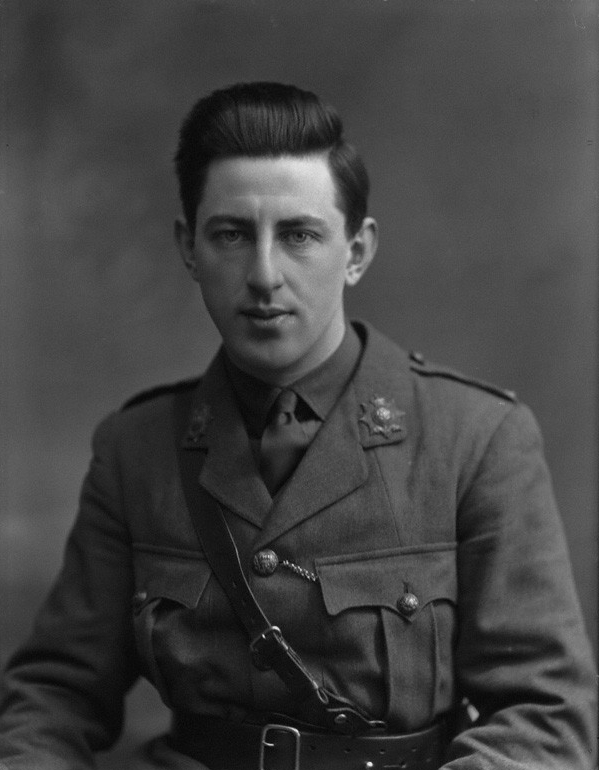Nash was a reluctant soldier. When considering the idea of signing up for active service he told a friend ‘I am not keen to rush off and be a soldier. The whole damnable war is too horrible of course and I am all against killing anybody.’
Nash progressed through the army, completing officer training in February 1917 before being stationed in the Ypres Sector. It was in the trenches of the Ypres Salient that Nash’s work as a war artist began. He started to record his life in the trenches through sketches. Later, while recovering from a non-service injury he worked some of these sketches into oil paintings and exhibited them to popular acclaim.
The success brought by this exhibition led to him being recruited as an official war artist and in this capacity he returned to the front. Nash did not find his new role easy to adopt. Like many artists exposed to life on the front line he found himself both appalled and captivated by what he witnessed. This is illustrated in a letter home where he describes the war ravaged no man’s land by night:
'Twilight quivers above, shrinking into night, and a perfect crescent moon sits uncannily below pale stars. As the dark gathers, the horizon brightens and again vanishes as the Very lights rise and fall, shedding their weird greenish glare over the land... At intervals we send up Very lights, and the ghastly face of No Man's Land leaps up in the garish light, then as the rocket falls, the great shadows flow back, shutting it into darkness again.'Paul Nash
 The Ypres Salient at Night, 1918. / © IWM (Art.IWM ART 1145)
The Ypres Salient at Night, 1918. / © IWM (Art.IWM ART 1145)
Nash was unable, due to war time censorship, to depict the full horrors of war. Instead, Nash painted heavily symbolic, elegantly tortured landscapes that give a dramatic impression of a world torn apart by war.
In his painting We Are Making a New World (1918) Nash depicts the Polygon Wood in Ypres Salient. The landscape is reduced to a few ragged stumps, all which remain of the woods that once stood there. Devoid of figures, it is a haunting image that leaves the viewer with a sense of how this new form of warfare affected the people on the frontline. It asks what would a weapon capable of ripping apart an entire landscape do to a human body? In many ways it is the lack of figures that give Nash’s painting their power. They ask questions without giving answers, leaving the audience to ponder the experiences of those who lived in such places and question the nature of war itself.
In 1918 Nash exhibited a series of sketches and oil at the Leicester Galleries, bringing his ‘bitter truth’ to the public consciousness. Despite the frustration he felt while he worked under the control of the War Propaganda Bureau, this collection would form the foundation of his artistic reputation.
Read about John Singer Sargent’s artistic contribution to remembrance here.

